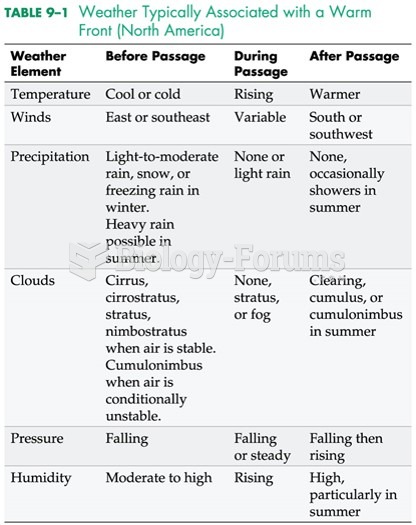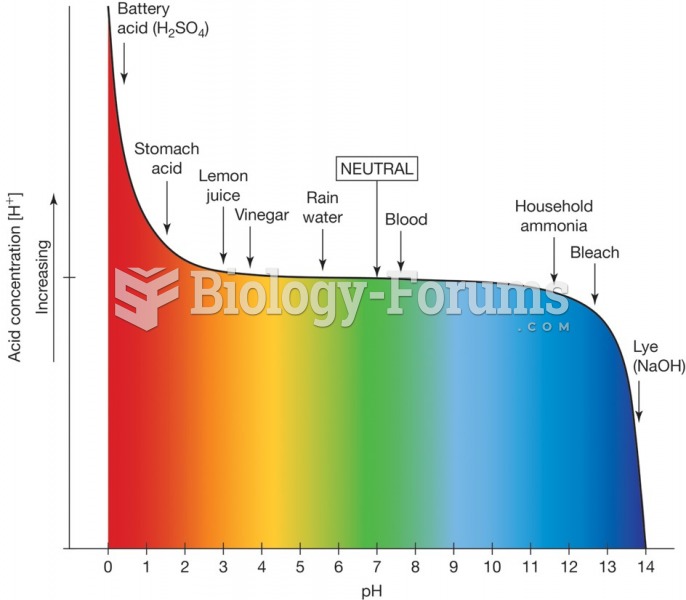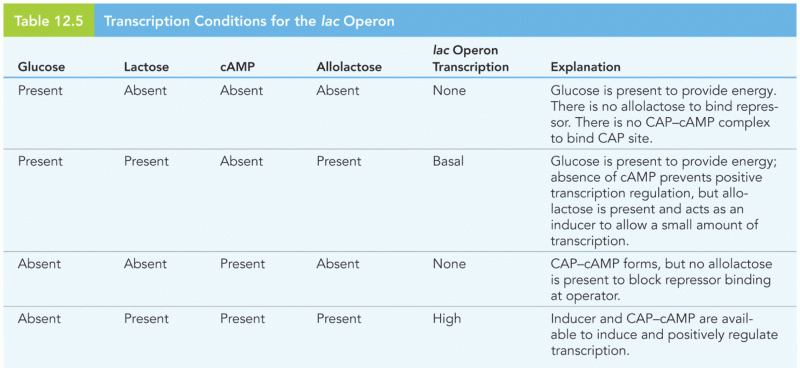Answer to Question 1
ANSWER:
Along the ITCZ, it is usually very wet as the rising air develops into huge thunderstorms that drop copious amounts of rain in the form of heavy showers. The northeast trades converge with the southeast trades along the ITCZ.
Answer to Question 2
ANSWER: Over the ocean, the weak pressure gradients in the center of the high produce only weak winds. According to legend, sailing ships traveling to the New World were frequently becalmed in the high pressure region located at 30 degrees, and, as food and supplies dwindled, horses were either thrown overboard or eaten. As a consequence, this region is sometimes called the horse latitudes.
The polar front is the boundary between mild surface air traveling poleward from latitude 30 degrees and cold air moving down from the poles. These two air masses of contrasting temperature do not readily mix. The polar front is a zone of low pressurethe subpolar lowwhere surface air converges and rises, and storms and clouds develop.
From the horse latitudes, near latitude 30 degrees, some of the surface air moves back toward the equator. It does not flow straight back, however, because the Coriolis force deflects the air, causing it to blow from the northeast in the Northern Hemisphere and from the southeast in the Southern Hemisphere. These steady winds provided sailing ships with an ocean route to the New World; hence, these winds are called the trade winds. Near the equator, the northeast trades converge with the southeast trades along a boundary called the intertropical convergence zone (ITCZ). In this region of surface convergence, air rises and continues its cellular journey. Along the ITCZ, it is usually very wet as the rising air develops into huge thunderstorms that drop copious amounts of rain in the form of heavy showers.
Over equatorial waters, the air is warm, horizontal pressure gradients are weak, and winds are light. This region is referred to as the doldrums. Here, warm, humid air rises, often condensing into huge cumulus clouds and thunderstorms called convective hot towers because of the enormous amount of latent heat they liberate. This heat makes the air more buoyant and provides energy to drive the Hadley cell. The rising air reaches the tropopause, which acts like a barrier, causing the air to move laterally toward the poles. The Coriolis force deflects this poleward flow toward the right in the Northern Hemisphere and to the left in the Southern Hemisphere, providing westerly winds aloft in both hemispheres.






